Yoga poses have many outstanding benefits both for the practitioner’s physical and mental health. Paddleboard yoga is a modern form of yoga where postures are done while standing on a board floating on water. This article will cover some effective paddleboard yoga poses you can add to your yoga sessions.
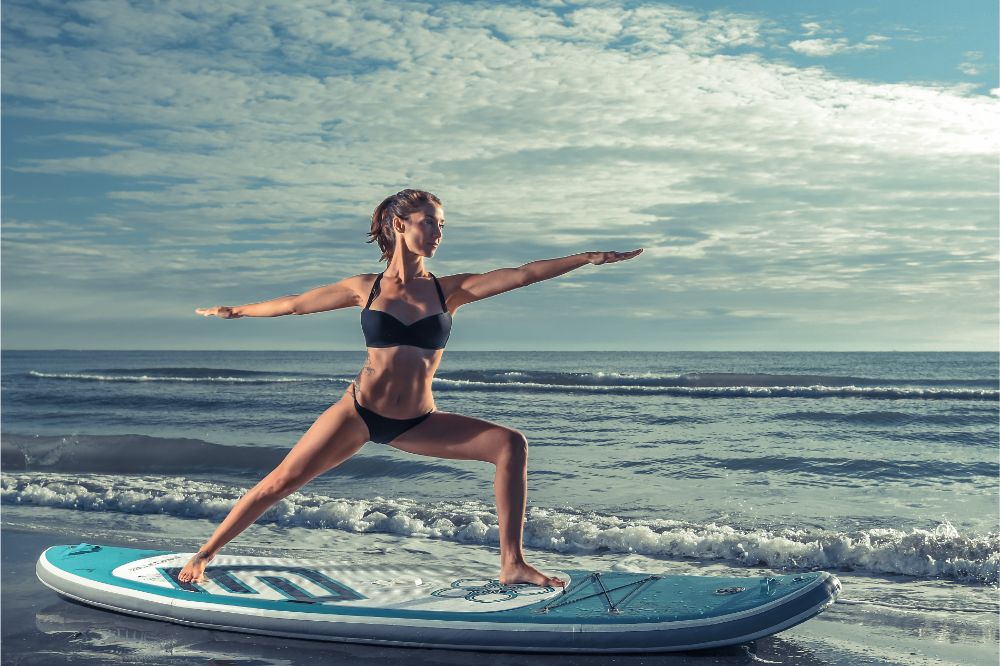
PaddleBoard Yoga Poses
Seated Prayer Pose
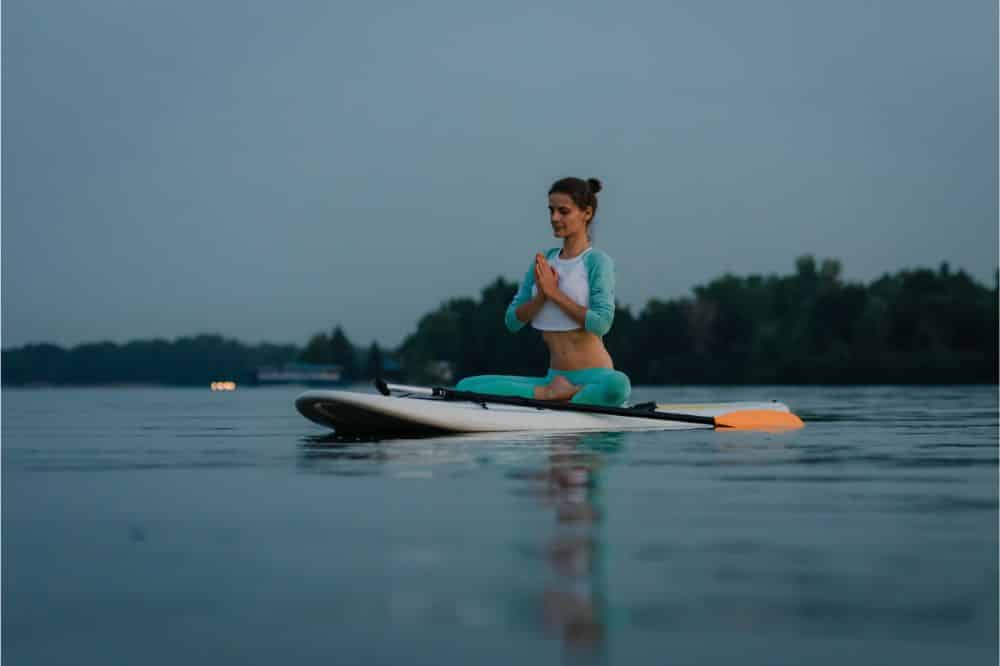
This pose is considered simple and keeps you relaxed. First, stand or sit on the paddleboard, then cross your legs to achieve the pose. Next, keep your head upright and the back straight while looking at the horizon. After that, put your hands on your chest and take a prayer posture, then release any tension in your body as you focus on breathing. This routine relaxes your body and mind and stretches your hips, leg muscles, and back.
Triangle Pose
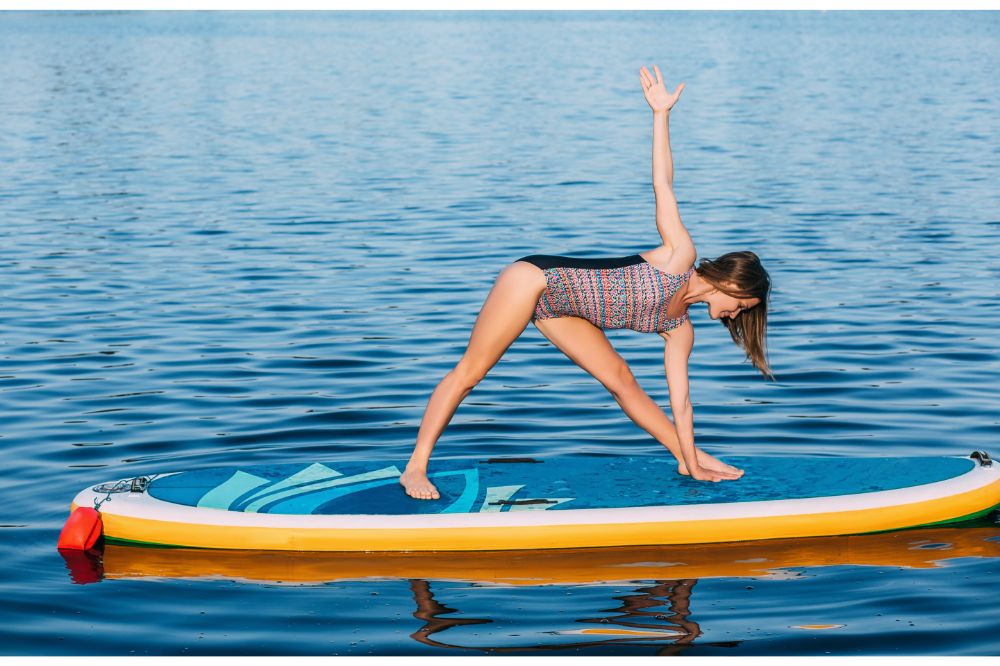
This yoga pose lands many beginners into the water as it can be challenging to achieve, but with continuous practice, it becomes easy. Place your right foot on the center of the paddleboard and twist the left foot on the board flat while the toes face outwards or to the left side. To maintain balance, bend the right knee. Keep your arms straight and raise the left arm. Face the paddle until you become steady, then turn and face to the left.
This pose stretches the spine, legs, and arms. It also opens up the chest and shoulders, enhancing flexibility.
Crescent Lunge SUP Yoga Pose
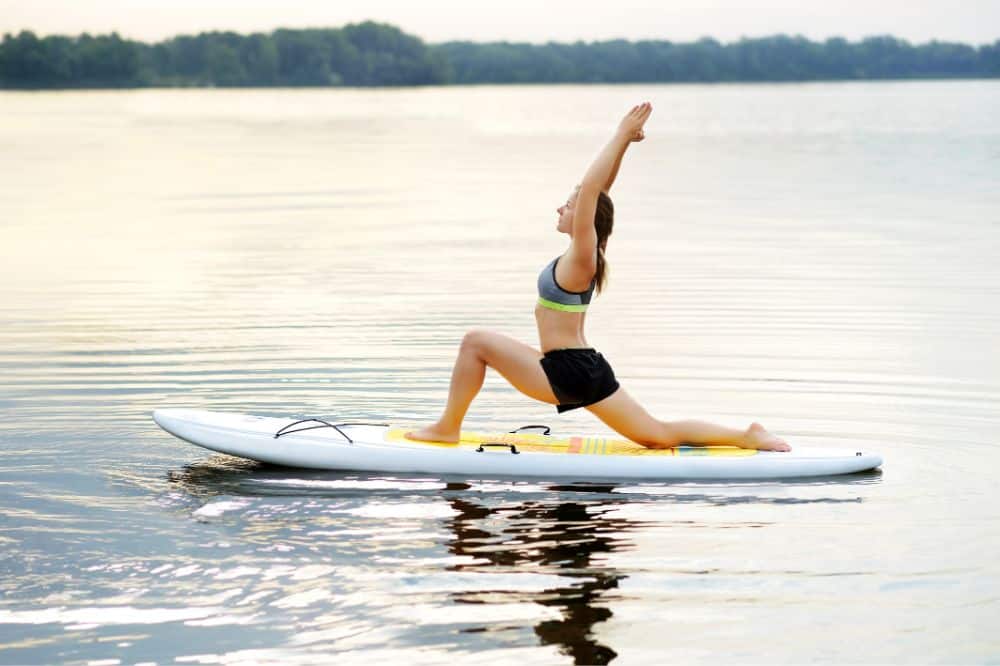
Though challenging for beginners, the crescent pose is a great way to help you improve on balance, especially if you are already used to yoga poses. It starts by bringing one leg out in a way that keeps the foot flat on the paddleboard and knee at a 90-degree angle.
Stretch the other leg on the board and maintain your balance as you get into the pose using your hands. After settling, extend your hands as you stretch upwards and make the palms come into contact. Lean back and hold, and stay in that position for some minutes.
Down Facing Dog
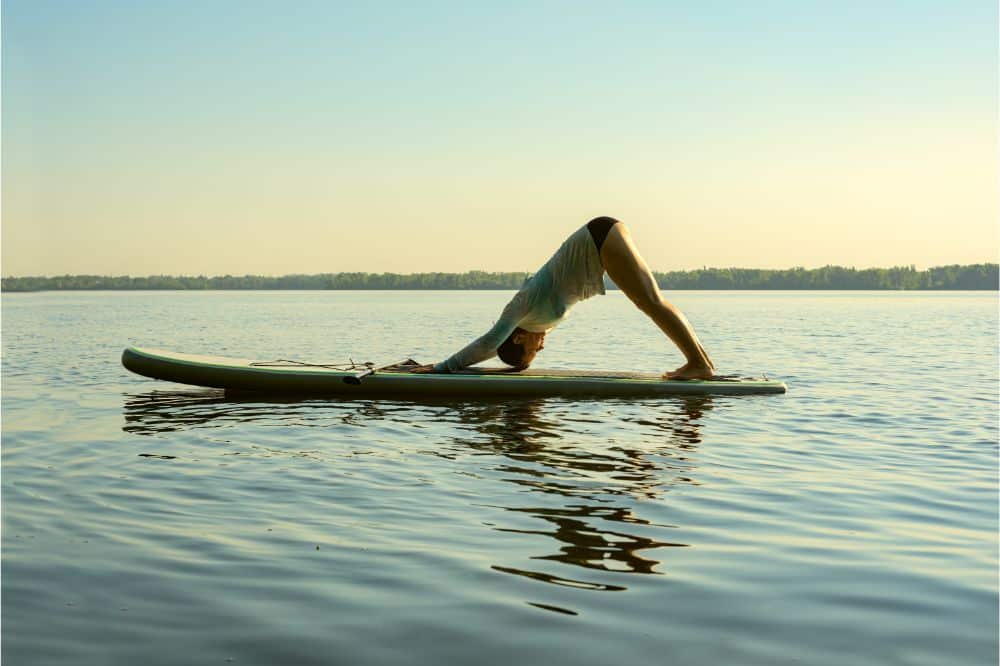
If you are a beginner and are looking for a simple yoga posture to ease into, then this is an excellent choice. Make sure the water is calm when doing it to prevent hurting yourself. First, come to your hands. Your arms should be straight with your hands shoulder-width apart and your toes placed on the paddleboard to get it right.
Raise your hips up towards the sky until your knees are straight, and if it becomes difficult, slightly bend the knees. Make a fist or press fingertips against the board when you feel your wrists are under intense pressure.
Warrior 1 Paddle Board
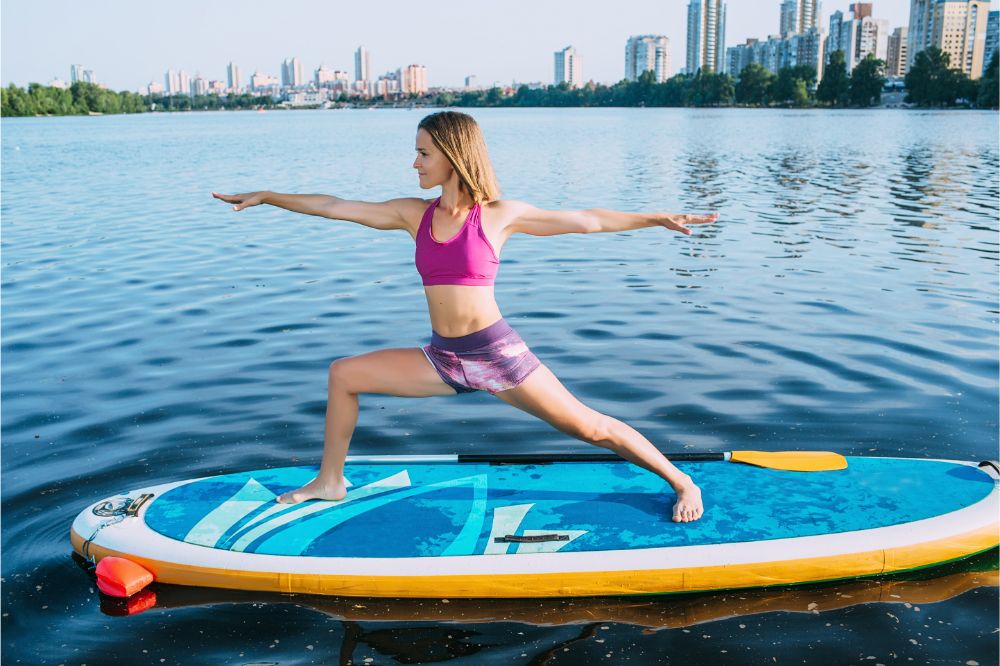
The warrior one paddle pose requires more skill to maintain stability on the paddleboard. It starts by putting a foot on the board between your hands. Next, move the left foot to the left side and the right foot to the right side to increase stability. Then, step your feet on the board surface firmly while keeping the knee at an angle of 90-degrees to the front. Finally, after attaining maximum stability, lift the arms straight up.
This pose stretches the legs, arms, and torso. It also opens up the chest and hips.
Boat Pose
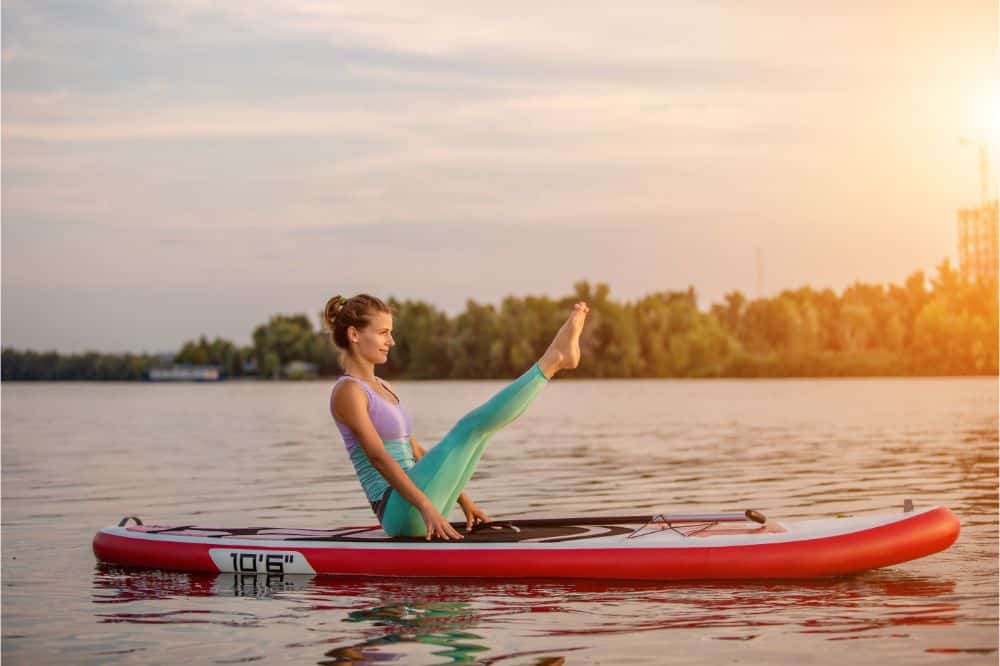
This pose helps strengthen your core, similar to other sports and exercises. You begin by sitting on the paddle with your legs stretched. Lift your legs as you keep the back straight, then stretch your arms out to the front. Bend your knees when it becomes hard. Lift your hands and point your fingertips forward, then straighten your legs to make it more challenging. Keep your back straight to engage the core.
Your hips, back, and core become steady and strong after this challenging pose. It also aids with digestion as it engages the abdomen.
Chair Pose
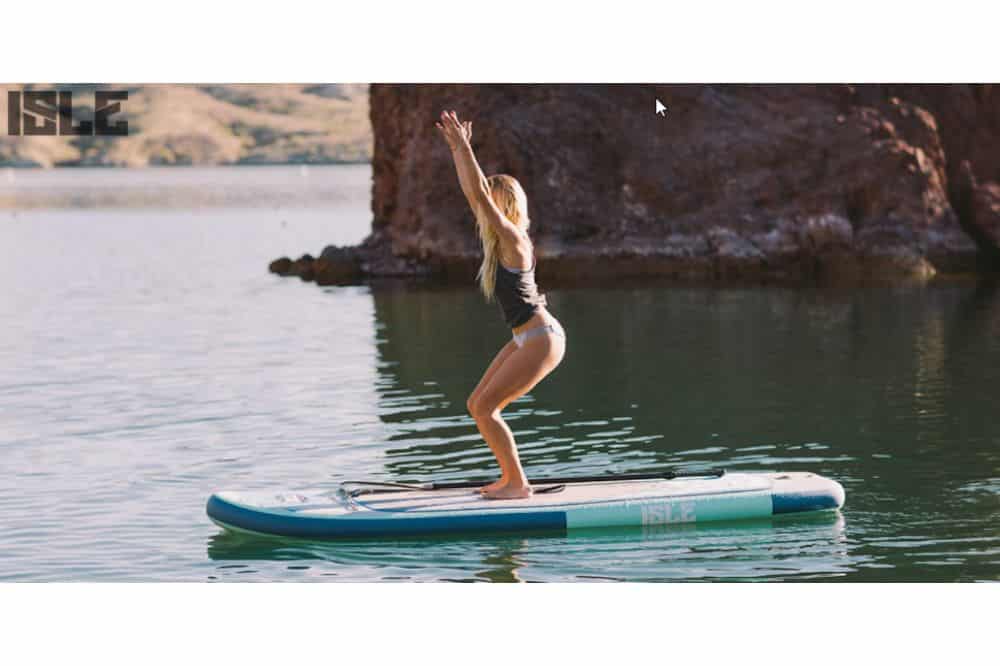
The chair pose puts your core and legs to hard work. You achieve the pose by standing on the paddleboard’s center point. Part the feet and keep your hands straight in front, pointing them upwards. Lower your hips to your meditation position and widen your feet width to make it easier. You can reduce the width of the feet in case it’s not difficult for you.
You will feel the burn in your legs and core, which means they are improving. This pose is also perfect for making your ankles strong.
Plank Yoga Pose

The plank yoga pose is perfect for people who desire strong cores. Doing it on a paddleboard makes it more difficult, which is perfect for a strong core.
To start the pose, move from the downward dog position and point the heels towards the sky. Roll your spine out to a straight position, keeping your toes on the paddle. You can add fun to the position by twisting your hips from side to side. You will eventually feel the burn if you maintain your toes on the paddle and keep your hands beneath your shoulders.
Garland Pose

This pose is easy to achieve if you have zero knee problems. To start, stand straight on the board at the center. The width of the feet can be widened to increase balance, then point the heels inwards and the toes outwards. Next, lower your hips slowly and keep your back straight as you bring the hands into a praying position.
This pose is intended to open the hips and groin while giving the muscles an effective workout. In addition, it makes your ankles and knees stronger.
Cobra Pose
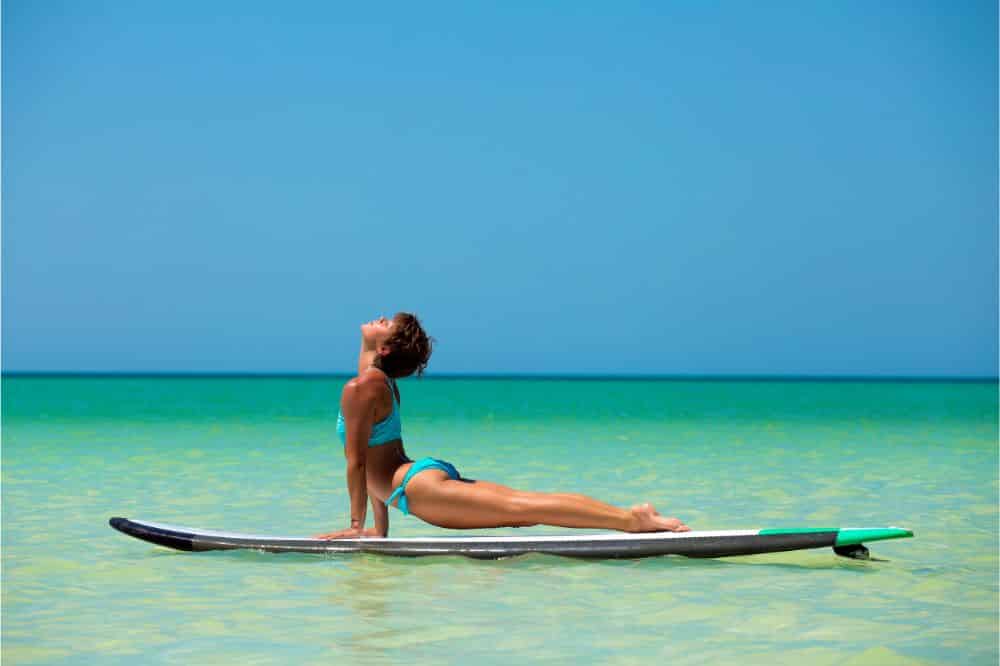
Cobra pose is perfect for people who love stretching-style exercises. Plus, you don’t need a lot of balance to make it work. The first step is to lie face-down in a prone position and place your hands directly underneath the shoulders. Slowly lift your torso while straightening the arms, keeping your elbows close to the sides of your body. Ensure that your knees and legs are lying flat on the board.
Summary
Paddleboard yoga can be strenuous, but it is effective and keeps your body in great shape, but remember that Paddle Board Yoga provides even more benefits than “normal” Yoga already does. The trainig effect and rate of calories burnt of SUP Yoga is significantly higher compared normal Yoga – and it makes even more fun!
After adding the above routines to your yoga sessions, you will be happier and healthier. Moreover, they’ll reduce your stress and give you a calming feeling of relaxation. Make sure you are cleared by your doctor before attempting the poses, especially for expectant women.
So now that you know a lot more about SUP Yoga you’ll only need a great Yoga SUP Board! Check out our selection of the best in class inflatable boards for Yoga.






